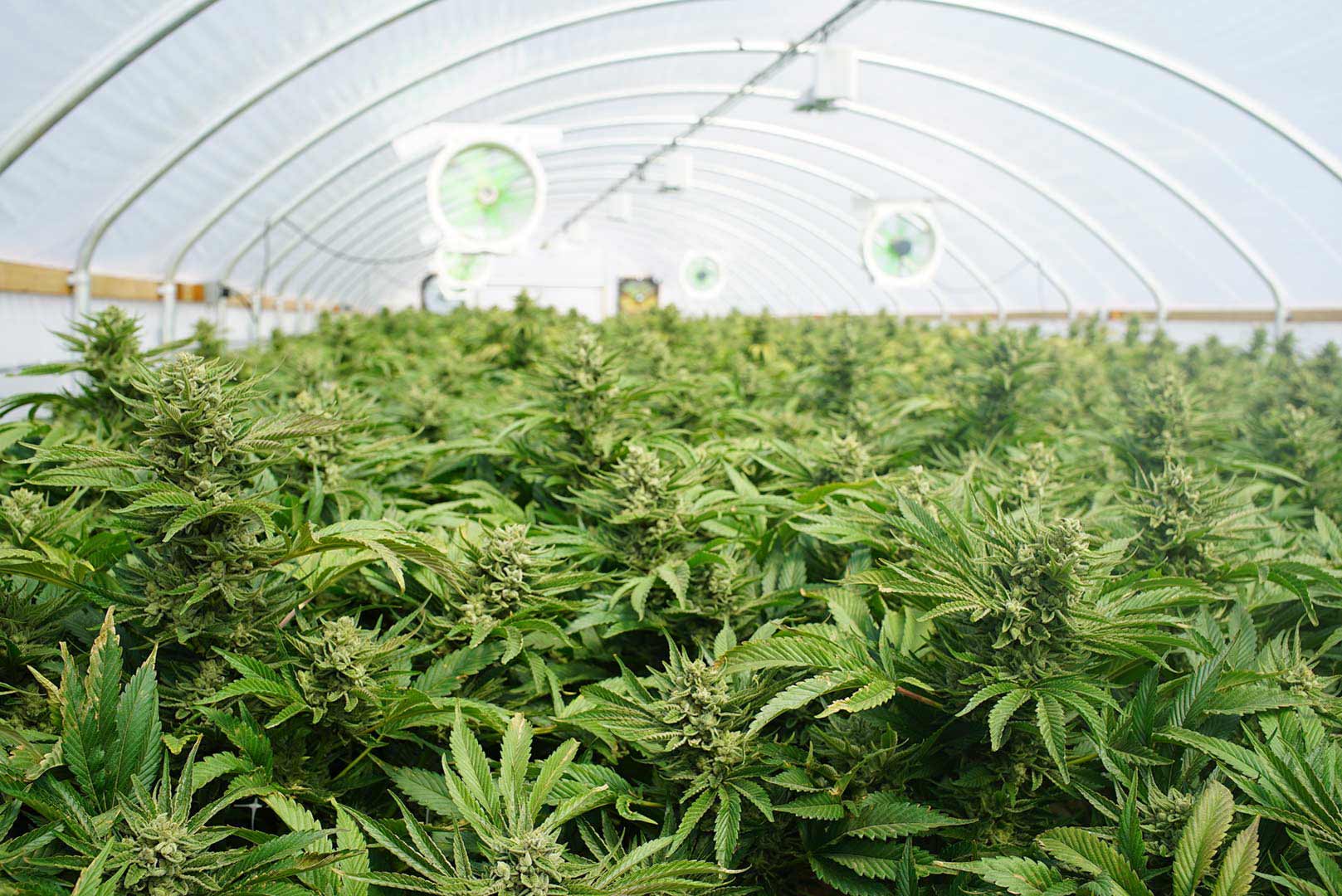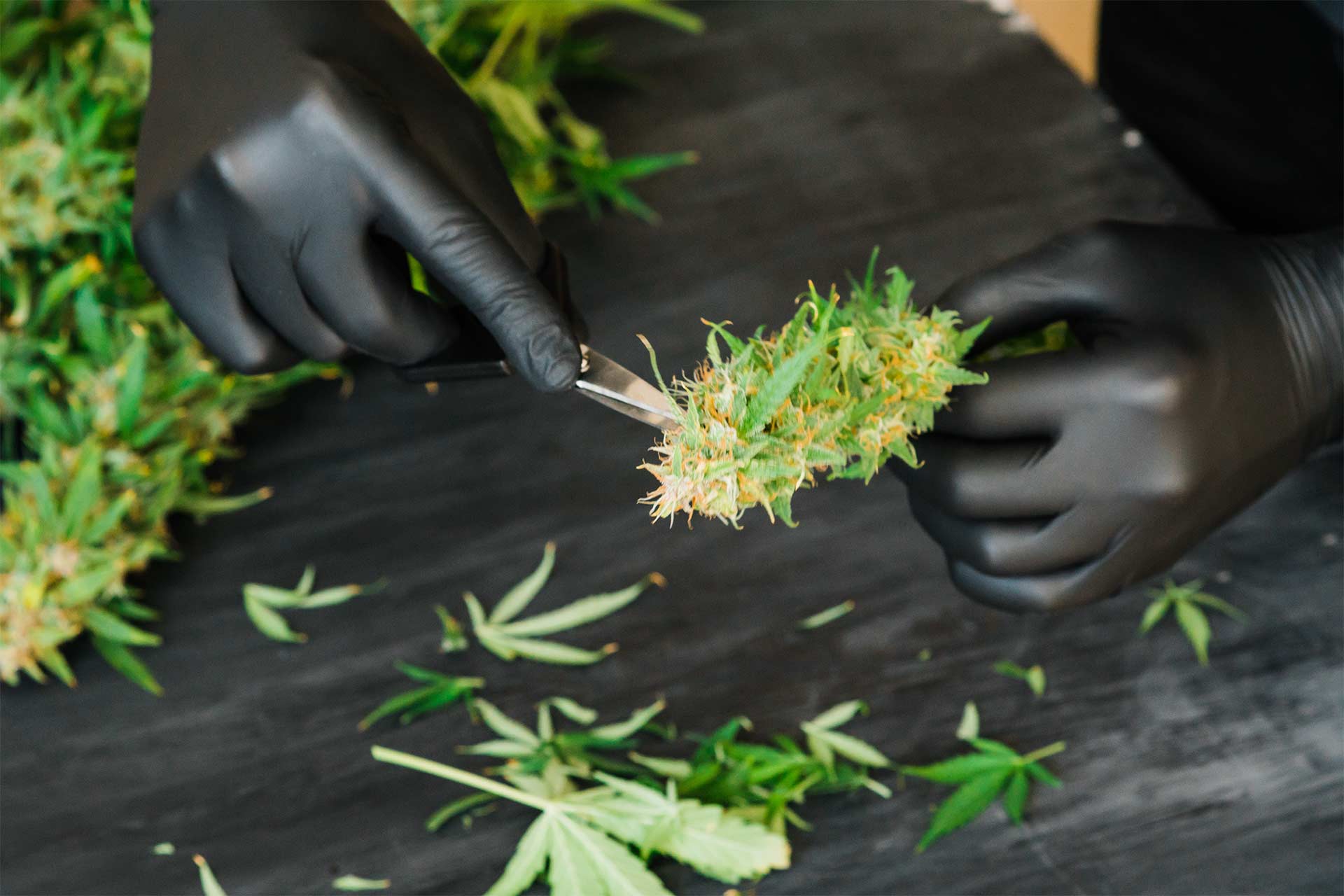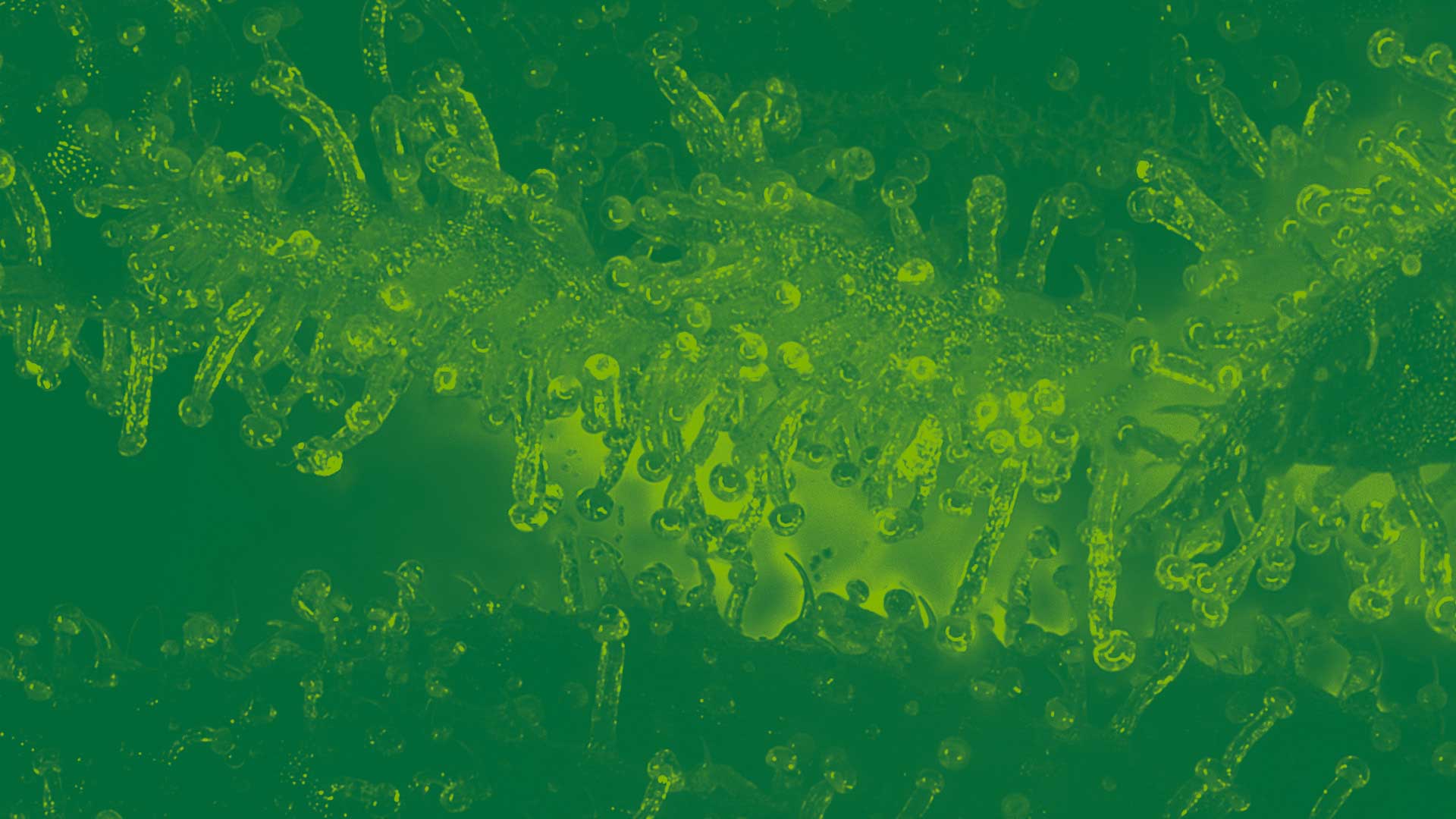Discover how AirKush Technology by Green Vault Systems revolutionizes cannabis packaging, prioritizing trichome protection.
Trichomes are the heart of cannabis potency, flavor, and aroma. Green Vault Systems’ AirKush Technology, showcased in the Precision Batcher, offers a game-changing approach to cannabis packaging by prioritizing trichome protection. This innovation doesn’t just package cannabis, it protects trichomes so consumers get the full experience.
In the thriving ecosystem of cannabis cultivation, one element captures the essence of the plant’s allure: the trichome. Think of them as the unsung heroes in a saga where quality, flavor, and potency intersect.
For the seasoned commercial grower, trichomes represent the zenith of cultivation expertise.
Yet, for those newer to the industry, they might remain enigmatic. As we journey into the depths of trichomes—exploring their form, function, and the paramount importance of safeguarding them during packaging—we’ll uncover why, in this industry, the smallest details often hold the most significant value.
Whether you’ve been in the game for decades or are charting new territories, one fact remains constant: trichomes deserve respect. And it’s high time we gave it to them.
Understanding Trichomes
When you look closely at a cannabis plant, you’ll notice various parts—from the strong stems and wide leaves to the aromatic buds and fine hairs. But when you focus even closer, trichomes begin to stand out.
While trichomes are incredibly small, it’s hard to miss these minuscule crystalline structures that glint like morning dew on the plant’s surface. Broadly speaking, trichomes are diverse. They come in three main varieties—bulbous, capitate-sessile, and capitate-stalked—and each variety has its distinct appearance and function:
- Bulbous Trichomes: These are the smallest of the trichomes. Shaped like minuscule bulbs and sparsely distributed across the cannabis plant, their function, although not as pronounced as their larger counterparts, is to synthesize a modest amount of cannabinoids and terpenes, contributing subtly to the plant’s potency and aroma.
- Capitate-Sessile Trichomes: More abundant and slightly larger than bulbous trichomes, the capitate-sessile trichomes are mainly found on the underside of fan and sugar leaves. These trichomes produce a more significant share of the plant’s cannabinoids and terpenes, although not as much as the capitate-stalked. Their hidden position offers a primary defense mechanism against pests and other potential threats.
- Capitate-Stalked Trichomes: The titans of trichome types, these are where the majority of the magic happens. Easily distinguishable with their mushroom-like appearance, they are the primary producers of the plant’s cannabinoids, terpenes, and flavonoids, playing a central role in the plant’s potency, aroma, and flavor profiles. They also act as a robust shield against UV rays and potential herbivores, further underlining their significance.
But why do these structures matter so much to us?
For starters, trichomes are the primary producers of cannabinoids, such as THC and CBD. It’s no exaggeration to say that the health and density of trichomes have a direct correlation with the cannabis plant’s potency and effects.
What’s more, if you’ve ever paused to appreciate the distinct aroma and flavor profiles of cannabis, you have trichomes to thank. Specifically, the terpenes, aromatic compounds produced in abundance within these trichomes.
Beyond their role in flavor, aroma, and potency, trichomes wear another hat—they act as nature’s shield. Their presence on the plant helps deter pests and serves as a line of defense against various environmental stressors.
The Trichome Timeline: From Clarity to Color
For cultivators, trichomes are more than just ornamental or protective appendages; they are dynamic indicators of the plant’s maturity and potency. As the cannabis plant journeys through its life, these glandular trichomes undergo visual transformations, signaling various stages of growth and chemical composition.
In the early days of a cannabis plant’s life, trichomes gleam with clarity, appearing almost crystalline. This is a phase of innocence, with the trichomes yet to embark on their more active roles. As the plant moves closer to its prime, the trichomes shed their transparency, turning milky or cloudy. This is the point when the THC concentration, a chief psychoactive compound, is at its peak. The once clear trichomes are now dense with the potency that cannabis aficionados crave.
But nature is ever-evolving, and so are the trichomes. As time progresses, they undergo another metamorphosis, adopting a rich amber or red hue. At this juncture, while THC levels taper off a tad, the trichomes become richer in cannabinol (CBN). As THC ages, it naturally morphs into CBN, a compound known for its soothing effects.
For those entrenched in cannabis cultivation, these color shifts are akin to a plant’s way of communicating. The nuances in trichome coloration offer insights into when to harvest for desired chemical compositions.
Many cultivators, especially those inclined towards indica strains, believe that the perfect harvest window is when trichomes are in their milky phase, just before the onset of amber.
Conversely, for sativa strains or hybrids demanding lengthier flowering durations, cultivators await the amber signal.
New Techniques in Protecting Trichomes
Consumers bank on the promise of potency, flavor, and aroma when purchasing cannabis flower. In safeguarding trichomes, you are upholding your end of the deal with the cannabis purchasing public. Thankfully, technological advancements have begun to sprout in the realm of trichome protection.
For starters, the Canadian Light Source in Saskatoon recently unveiled groundbreaking images of cannabis trichomes, detailed beyond prior comprehension. Under the guidance of Teagen Quilichini at the National Research Council, state-of-the-art beamlines paved the way for this accomplishment, capturing the trichomes of the female cannabis flower in stunning detail. But this work transcends mere visual clarity. By studying trichomes across diverse growth stages, the research disclosed marked shifts in their variety and quantity, insights that promise to recalibrate how we approach cultivation.
Now, while researchers such as those at the Canadian Light Source are diving into understanding trichomes, others are focusing on preserving them. Our AirKush Technology stands at the forefront in this practice, using gentle air currents to safeguard these microscopic treasure troves during packaging and ensure that what nature crafted remains undisturbed for the consumer.
Why Protection Matters: Ensuring Potency and Upholding Trust
The road from cultivation to consumer involves several stages, each pivotal in its own right. Among these, the packaging process stands out for its critical nature. Sure, it’s about crafting an aesthetically pleasing enclosure for the product itself, but it’s also about safeguarding the flower’s characteristics.
Cannabis enthusiasts are keenly aware of the benefits they seek in their chosen strains. The euphoria from THC, the tranquility imparted by CBD, and the unique aromas and flavors offered by various terpenes—these are all curated experiences that come at a premium that consumers are willing to pay. Here lies the profound responsibility of cannabis packaging companies. Each trichome serves as a reservoir of these compounds, and any damage to them equates to a compromised experience for the end user.
When a consumer purchases a product, they’re investing in a brand’s assurance of potency and quality. Every damaged trichome is a slight deviation from that assurance. As such, preserving trichomes becomes an act of upholding a brand’s reputation and ensuring that consumers receive the value they expect.
By adopting technologies that prioritize trichome protection, like AirKush, these companies do more than merely preserve; they emphasize the industry’s dedication to its consumers. In a market where consumer satisfaction is paramount, there’s no responsibility more critical than delivering the potency that consumers anticipate and deserve.
Why You Shouldn't Repurpose Food Packaging Equipment for Cannabis
When it comes to packaging, it’s easy to assume that if it’s good enough for edibles, it’s good enough for cannabis. After all, both industries involve sensitive products requiring careful handling. However, this assumption can lead to catastrophic results for cannabis, particularly where trichomes are concerned.
- Aggressive Handling: Food packaging systems, designed for foods like grains or nuts, often rely on mechanisms that can be too aggressive for cannabis. For instance, the rapid vibrations used to shuffle almonds into bags can wreak havoc on cannabis buds, dislodging or damaging the fragile trichomes.
- Pressure Issues: Food packaging equipment often employs vacuum methods to remove air from packaging, ensuring longer shelf lives for food products. This vacuum process, when applied to cannabis, can compress the buds, crushing the delicate trichomes against one another or the inner surfaces of the packaging.
- Heat Exposure: Sealing mechanisms in many food packaging systems use heat. While this ensures an airtight seal for perishable food items, the same heat can compromise trichomes, leading to a loss of potency and aroma. For a product like coffee beans, this heat might be inconsequential, but it has the potential to damage cannabis.
- Material Interactions: Foods, by nature, are less reactive with many packaging materials. Cannabis, on the other hand, possesses active compounds, which might not play well with certain packaging materials designed exclusively for food. Such interactions can compromise the quality of cannabis, leading to an unpleasant experience for the user.
- Static Charge: Some food packaging systems might generate static electricity. Static can pull trichomes away from the cannabis buds, sticking them to the packaging’s interior. This not only reduces the product’s potency but also alters the aesthetics of the packaged cannabis, presenting it as less “frosty” or appealing.
Cannabis requires specialized attention, particularly when it comes to packaging. Trichomes need delicate handling that general food packaging equipment simply isn’t designed for. Adopting industry-specific solutions, like our AirKush Technology, ensures the product’s integrity and demonstrates a commitment to offering consumers the very best.
Green Vault Systems Equipment with AirKush Technology
If you want to distribute cannabis in the lucrative consumer market, you have to package it. But when machines meet buds, the unforgiving gears of industry can wreak havoc on trichomes and the other most precious parts of the plant. That’s why we developed AirKush—to match the delicate nature of cannabis with a kinder, gentler packaging process.
Unpacking AirKush Technology
At its core, AirKush Technology harnesses the power of gentle air puffs to maneuver cannabis. Instead of the abrasive vibration methods commonly used in the industry, this system uses soft air pulses. The result is a seamless and smooth transportation process that significantly reduces the risk of trichome damage. By protecting these crucial trichomes, AirKush ensures that the potency and quality of the cannabis remain intact.
When juxtaposed with conventional packaging techniques, the merits of Green Vault Systems’ AirKush Technology are evident. This equipment is tailored to the specific needs of cannabis, putting trichome protection at the forefront in a system that’s easy to operate.
AirKush Technology and the Precision Batcher
Designed with an innate understanding of the cannabis industry’s unique demands, the Precision Batcher stands out for its efficiency and the reverence with which it handles its charge. The AirKush Technology central to its design ensures that as the dried cannabis flower is measured and dispensed, the meticulous art of cultivation is honored every step of the way.
Its success shines through in practical applications, such as at Phat Panda, where the value of the technology is evident in the final product. The strains of cannabis produced there resonate with unparalleled aroma, flavor, and potency. Tyler Miller, Phat Panda Director of Facilities, emphasizes the Precision Batcher’s intuitive design, stating, “Its simplicity is clear—most can glance at it and instantly discern its function and operation, even without a mechanical background.”
But beyond its mechanics, the Precision Batcher and our pioneering AirKush Technology, embodies a respect for cannabis, delivering the pinnacle of quality from cultivation straight to the consumer.
With AirKush Technology in the Precision Batcher, you don’t just package cannabis—you prepare it for consumers to truly savor. Elevate your harvest to its highest potential and honor the art of cultivation.











